Posts Tagged: Asian citrus psyllid
Targeting the Asian Citrus Psyllid
While you're peeling and segmenting your orange at breakfast or spooning orange honey on your toast, you're probably not thinking about the Asian citrus psyllid. But Mark Hoddle, Extension entomologist and director of the Center for Invasive...
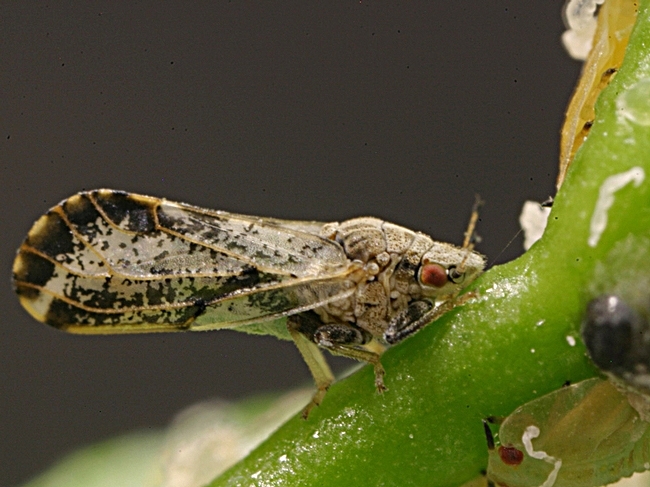
The Asian citrus psyllid, about the size of an aphid, is a major threat to the multibillion dollar citrus industry in the United States.(Photo courtesy of the California Department of Food and Agriculture)

Mark Hoddle, Extension entomologist and director of the Center for Invasive Species Research at the University of California, Riverside, will speak on “Protecting California Agriculture from Invasive Pests: Biocontrol of Asian Citrus Psyllid in Urban Southern California" on Sept. 26 at UC Davis. (Photo Courtesy of UC Riverside)
Targeting the Asian Citrus Psyllid
A major citrus pest may experience a “Bah, Humbug!” kind of year. If all goes as planned, UC Davis chemical ecologist Walter Leal's discovery of the sex pheromone of the Asian citrus psyllid--which spreads the deadly citrus greening disease,...
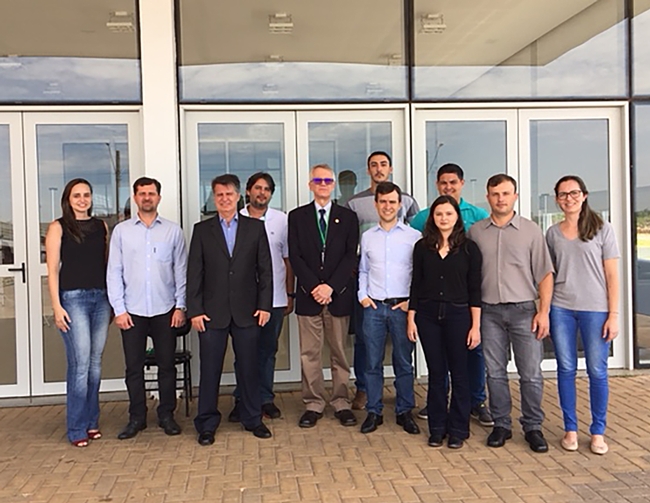
The Asian Citrus Psyllid Team: Scientists in the front row (from left) are Tatiana Mulinari, Rodrigo Magnani, Antonio Juliano Ayres, Walter Leal, Marcelo Miranda, Victoria Esperanca, Odimar Zanardi, and Rejane Luvizotto. The three scientists in back are Haroldo X. L. Volpe (white shirt) Renato de Freitas and Rômulo Carvalho.
Ground-Breaking Research: Sex Pheromone of Asian Citrus Psyllid Discovered
The Asian citrus psyllid, the most devastating threat to the worldwide citrus industry, may have met its match. In a ground-breaking discovery encompassing six years of research, an international team of scientists led by UC Davis chemical ecologist...
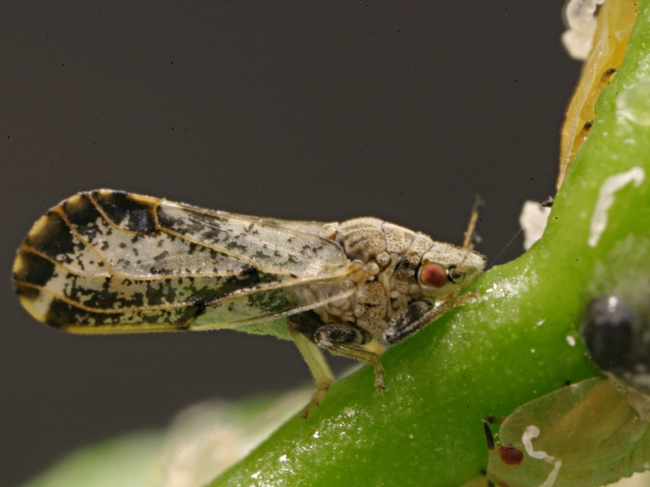
This is the Asian citrus psyllid, a mottled brown insect about 3 to 4 millimeters long, or about the size of an aphid. Widespread throughout Southern California, it is now found in 26 of the state's 58 counties. (CDFA Photo)
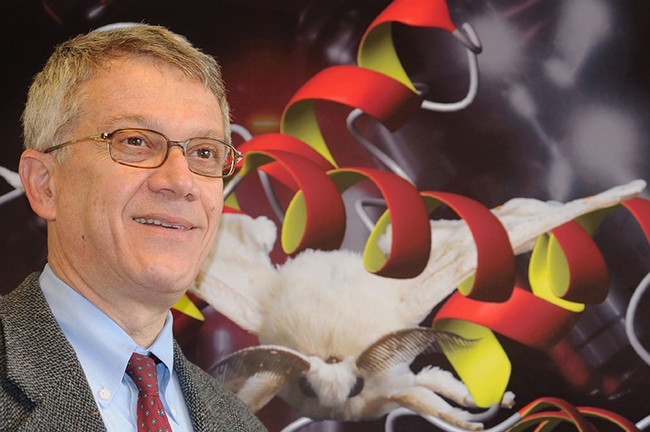
UC Davis chemical ecologist Walter Leal has just discovered the sex pheromone of the Asian citrus psyillid. He has also discovered the sex pheromones of a number of other insects, including moths (background). (Photo by Kathy Keatley Garvey)
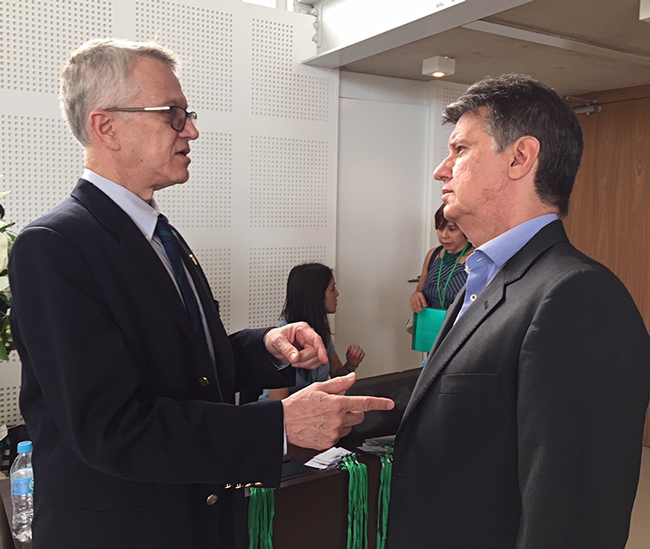
UC Davis chemical ecologist Walter Leal (left) talks with FUNDECITRUS director Juliano Ayres on Dec. 5 at the 10th Annual Meeting of Chemical Ecology in Sao Paulo.
Check Your Citrus Trees for Signs of This Pest
If you're a California commercial citrus grower or a homeowner with a citrus tree on your property, be sure to check for signs of the Asian citrus psyllid (ACP). Think ACP. Think HLB. Think ASAP. ACP spreads the killer huanglongbing (HLB) disease,...

An adult Asian citrus psyllid. (Photo by M. Rogers)
The Threat of Invasive Species
The public, says entomologist Kris Godfrey, needs to become more aware of the threat of invasive species.And, she adds, we need to educate people and organizations about the incoming pests and pests that are already here.With that in mind, she's...
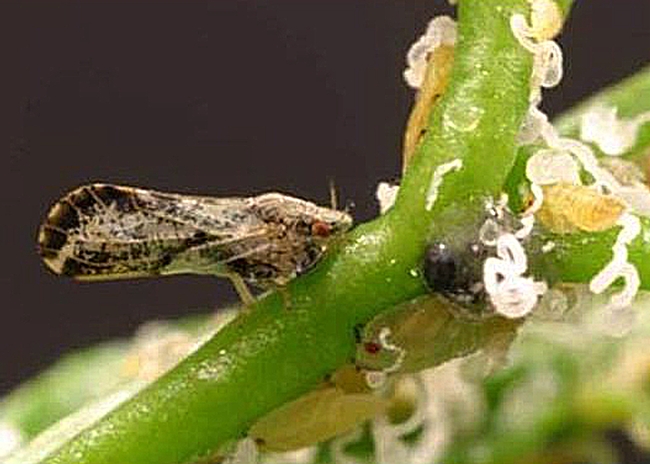
Asian citrus psyllid is an invasive pest. (Photo by M. E. Rogers, University of Florida)
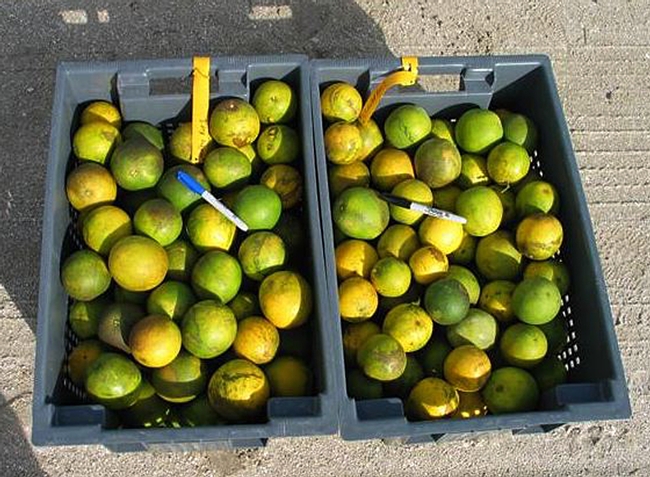
Bin at right shows Huanglongbing (HLB) symptoms caused by Asian citrus psyllid. At left: normal fruit. (Photo by S. E. Halbert, Florida Department of Agriculture and Consumer Services)

